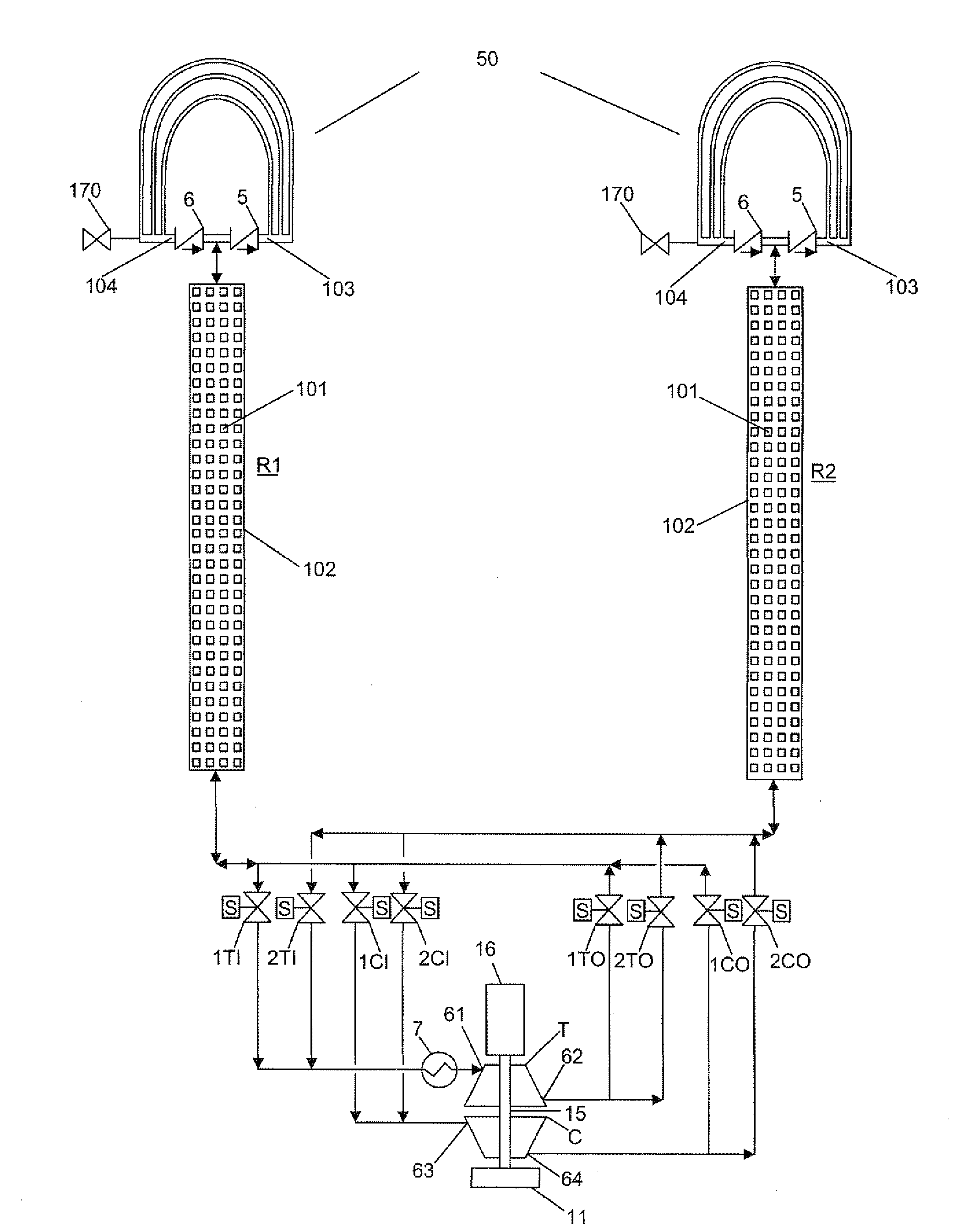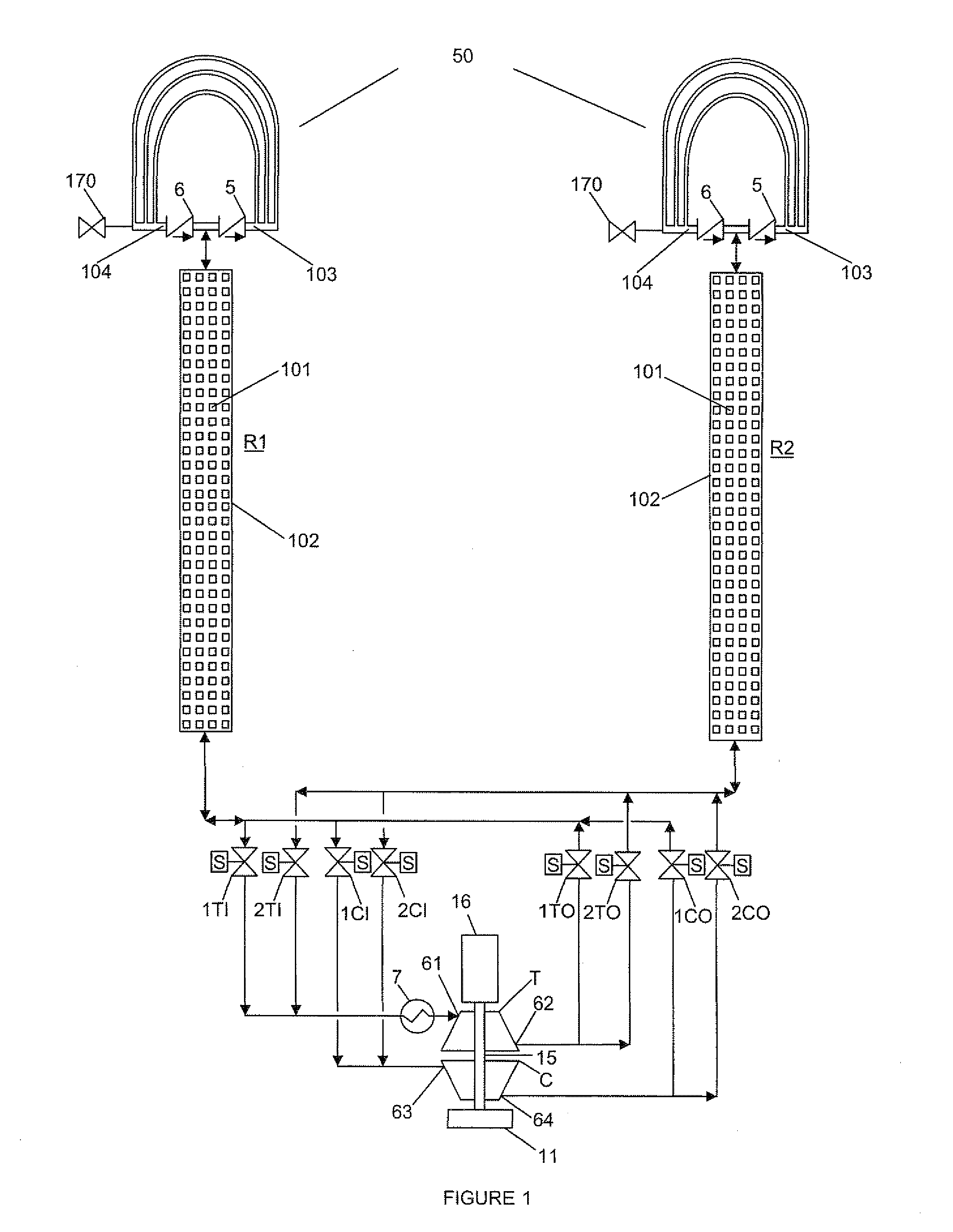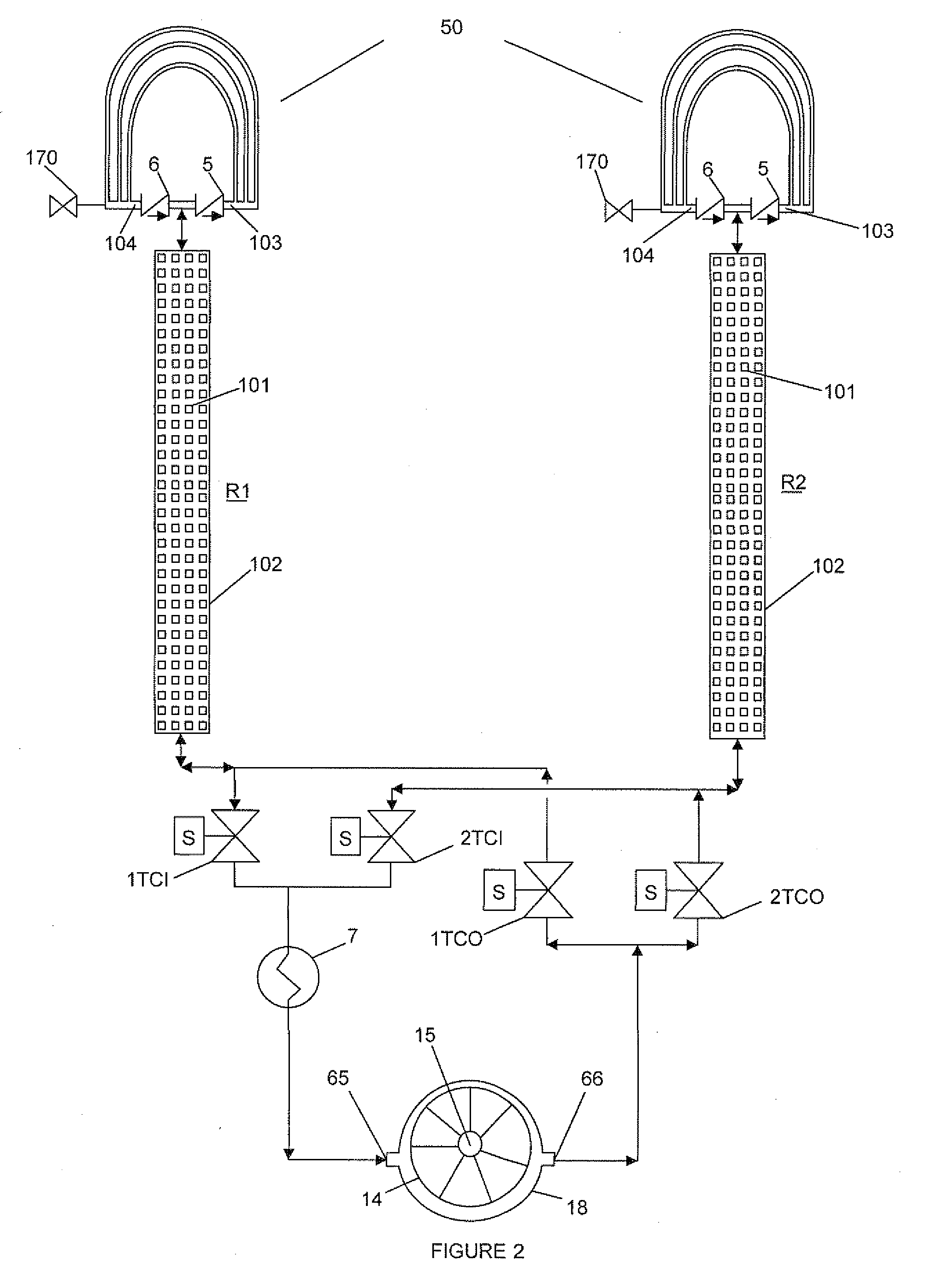Maximized Thermal Efficiency Engines
a technology of thermal efficiency and maximum efficiency, applied in the direction of machines/engines, ericsson type engines, hot gas positive displacement engine plants, etc., can solve the problems of inability to separate hot and cold cylinders, and inability to achieve high thermal efficiency. achieve the effect of being usabl
- Summary
- Abstract
- Description
- Claims
- Application Information
AI Technical Summary
Benefits of technology
Problems solved by technology
Method used
Image
Examples
Embodiment Construction
[0014]First heat regenerator (R1) and second heat regenerator (R2) in FIGS. 1, 2, and 3, and heat regenerator (R) in FIGS. 4 and 5 comprise thermal capacity possessing, finely divided, heat regenerator material (101), enclosed in a pressure confining, heat insulating, minimized heat conducting boundary (102) having a first end and a second end. Fluid seal connected to the first end of each heat regenerator (R1, R2, and R) is heat rejection means (50). The heat rejection means (50) is provided with inlet and outlet ports (103) and (104) respectively. Two one way check valves (5) and (6) are provided in the flow paths from the heat regenerator (R1, R2 and R) to the heat rejection means (50). Check valve (5) ensures that when the working gas flows from the heat regenerator to the heat rejection means it will only enter through the inlet port (103), and check valve (6) ensures that when the working gas flows from the heat rejection means to the heat regenerator it will only flow through...
PUM
 Login to View More
Login to View More Abstract
Description
Claims
Application Information
 Login to View More
Login to View More - R&D
- Intellectual Property
- Life Sciences
- Materials
- Tech Scout
- Unparalleled Data Quality
- Higher Quality Content
- 60% Fewer Hallucinations
Browse by: Latest US Patents, China's latest patents, Technical Efficacy Thesaurus, Application Domain, Technology Topic, Popular Technical Reports.
© 2025 PatSnap. All rights reserved.Legal|Privacy policy|Modern Slavery Act Transparency Statement|Sitemap|About US| Contact US: help@patsnap.com



